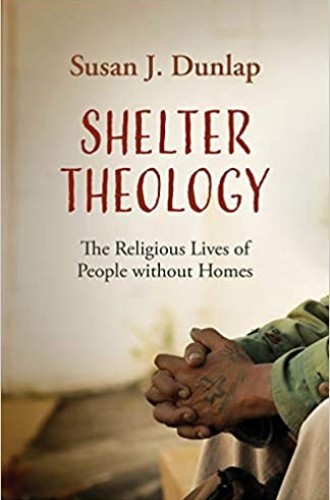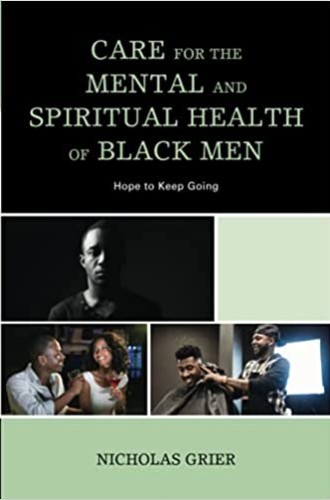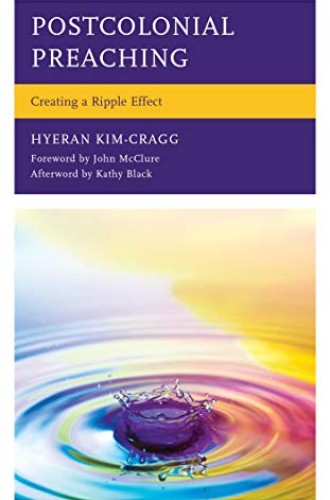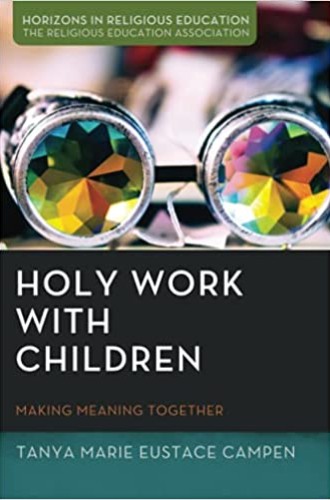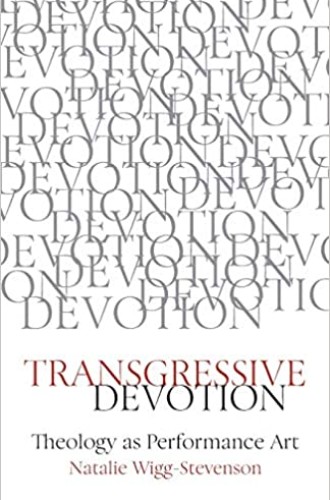Take & Read: Practical theology
Five new books about the practice of ministry after our recent calamities
It is imperative to consider the impact of the past year and a half and its cascading calamities on the Christian church and ministry. Many recent books in the field of practical theology are providing perspectives on how people of faith understand and respond to what has happened and what is next.
Susan J. Dunlap’s Shelter Theology: The Religious Lives of People without Homes (Fortress Press) is an ethnographic study of the religious worlds of people who live without housing. Based on her research and experiences as a shelter chaplain in Durham, North Carolina, Dunlap presents her local context through global conditions such as neoliberal capitalism and White supremacist systems to provide a rationale to address this social wound. She claims that faith communities facing inertia amid social upheaval have much to learn from those that are well practiced in survival among the worst circumstances.
Read our latest issue or browse back issues.
Through the prayer services she offered three days a week at the shelter, Dunlap became aware of an archive of beliefs, sayings, and practices that people without homes have used to find hope and stamina. The prayer services, which provide an alternative space to life on the street, are unscripted. They utilize music, proverbs, testimony, gestures, and forms that predominate in the Black church to create a “zone of belonging and recognition.”
Dunlap engages in her research with humility and integrity, sensitive to the possibility that she might reproduce stereotypes. She honors the theological facility of people who are commonly regarded as needing to be fixed or helped. She recounts their “resistance narratives,” taking a hard look at the potential horrors that hover over people without homes. The living beliefs of shelter theology, she discovers, are not propositional but come from woundedness and struggle. She implores pastoral caregivers to become “story companions,” disclosing God’s redemptive activity in a way that enables people to survive in hardship. While churches have been inconsistent in their reception of those without homes, Dunlap challenges readers to advocate for housing, befriend those without homes, provide spaces like her prayer services, and stand in proximity to those on the margins, for to “draw nearer to them is to draw nearer to God.”
In light of the historical and contemporary realities of oppression and racism that hinder the flourishing of Black men, Nicholas Grier’s Care for the Mental and Spiritual Health of Black Men (Lexington) argues that it is not just the responsibility of the Black community to care for Black men. Rather, all must play a role—and this requires having empathy for people with different experiences than our own. Grier’s research into the spiritual and psychological care of Black men avows they cannot be understood solely through White normative theories of care. Grier offers a “hope to keep going” model that takes seriously Black men’s experiences.
Grier conducted a study of Black men aged 25 to 40 who were recruited from a Chicago barbershop. Through data from a focus group and interviews, he develops a perspective on the experiences of Black men and the impact of racism on their health. He engages critical race theory to expose how the toxic air of racism impacts the mental and spiritual care of Black men. Harmful social behaviors such as profiling, police brutality, mass incarceration, and negative cultural images have lasting effects. Many caregivers might be only minimally aware of stereotypes and societal expectations for Black men.
While Grier (who is Black) does not generalize all Black men’s experience, his study reveals some unique considerations that caregivers should be aware of as they reflect on how to address the negative cultural images placed on Black men.
Grier found that Black men have an active mind with which they seek to make sense of their experience, a kind of internal war that affects their day-to-day reality as they navigate societal expectations and contend with feelings of rage at being chronically disrespected, devalued, and misunderstood. Communities and caregivers must work to ensure that Black men are valued as members of the human family. Grier gives attention to intrapsychic resources that Black men have and describes an integrating spirituality that is crucial for flourishing.
In Postcolonial Preaching: Creating a Ripple Effect (Lexington), HyeRan Kim-Cragg assists preachers concerned about justice in tackling difficult issues. She meets the “harsh winds of 2020” head-on, arguing that preachers must decolonize their preaching, and she develops a homiletics that challenges colonial ideologies. The ripple effect named in the subtitle happens when the gospel drops like a pebble into a lake to trouble the water with “gentle but persistent waves” that will stir minds and move hearts to build a better world.
Kim-Cragg addresses six components of postcolonial preaching—rehearsal, imagination, place, pattern, language, and exegesis—and includes a sample sermon to elucidate each one. The rehearsal component suggests that preaching rehearses the kin-dom and must always be reforming to embody justice. Rather than coming from a warm and fuzzy place, postcolonial preaching creates a courageous place where the church transgresses the status quo and liberates people from enslaving histories. A postcolonial pattern of preaching reconstructs other known patterns to eschew binary constructions and cultural essentialism. And Kim-Cragg stresses the need for preachers to hone their historical, dialogical, and diasporic imaginations. The stories in her sermons honor the lives of those who have been victimized by colonial ideology and systems.
The language of postcolonial preaching is cross-cultural, multilingual, and sometimes even nonlinguistic. Kim-Cragg critiques historical criticism as the dominant exegetical model of colonial environments, lifting up instead a strategy of contrapuntal reading, which considers the perspective of both colonizer and colonized. This exegetical strategy expands the reader’s capacity to make suppressed and marginalized voices perceptible. While the pandemic has changed the act of preaching and challenged our assumptions about it, it also provides an impetus for preachers to expand the ripple effect of the gospel.
Practical theologians are also asking how religious formation will be sustained in challenging times. Tanya Marie Eustace Campen’s Holy Work with Children: Making Meaning Together (Pickwick) offers faith formation tools for those who work with children in congregations. Part of the Horizons in Religious Education series published through the Religious Education Association, this book advocates for engaging in holy conversations to address the inequality, injustice, and divisiveness in our world and to commit to doing the work of justice together. Campen astutely notes that children are very aware of what is going on around them, including the anger and fear adults express in public. She reminds us that children are theologians who have a reciprocal impact on our lives of faith, recounting a poignant experience in which a child asked her, “How do I know I believe in God?”
Grounded in qualitative research with children in an after-school program and a church in Chicago, Holy Work with Children offers six tools: story, liturgy, relational awareness, memory markers (symbols, places, and objects), work, and wonder. Campen outlines how these tools can lead children in developing a living faith. She lays out a detailed process for ministers and educators to engage children in meaning making, including sample questions and possible responses. To support one another in the process of faith formation during and beyond the pandemic is to be attentive to each other and to wonder together about how God is calling us to love.
In a departure from all of the above, Transgressive Devotion (SCM Press) examines how performance art has the power to reorganize our theological imaginations. Natalie Wigg-Stevenson contends that we perform many roles in our everyday lives and that those performances are not inauthentic. Playing roles, rather, is the way that we—like children—learn. By transgressing the boundaries of what is acceptable, we find our way. This provocative book does not easily fit into the usual theological boxes. Its systematic framework might not look like practical theology, as Wigg-Stevenson seeks to disrupt the binary between practice and theory.
Wigg-Stevenson’s ethnographic work in her own Baptist congregation provides the stage for her performance theology. A description of a provocative piece of performance art opens each chapter, aiming to transgress “so that God can do a new thing in us.” These works rupture and reframe our theological thinking. The theological discourse follows from a class that she taught for her PhD fieldwork, incorporating her own journey as an academic theologian committed to feminist, liberation, and queer theories who worked as a minister in a conservative evangelical church.
In performance art, the community is not a source to be used in the art. Rather, the collaboration of the people is what makes the art. Likewise, fieldwork is theological collaboration where God shows up to perform redemption. Theology is not “nice words about God” but the script of God’s performance. It’s where and how God is acting. For every sermon preached or class taught, we provide the stage, some directions, and some props through which “God can perform Godself.” Performance art is by nature controversial, and so will be performance theology. Wigg-Stevenson seeks to uncover and perform old stories, doctrines, and scriptures that interrupt affective structures of faith. She reveals theological images and metaphors that need to be transgressed to produce “new and vital forms of Christian devotion.”
Read Joshua Jipp's New Testament selections, Philip Jenkins's global Christianity selections, and Anne Blue Wills's American religious history selections.
A version of this article appears in the print edition under the title “Take & Read: Practical theology.”


